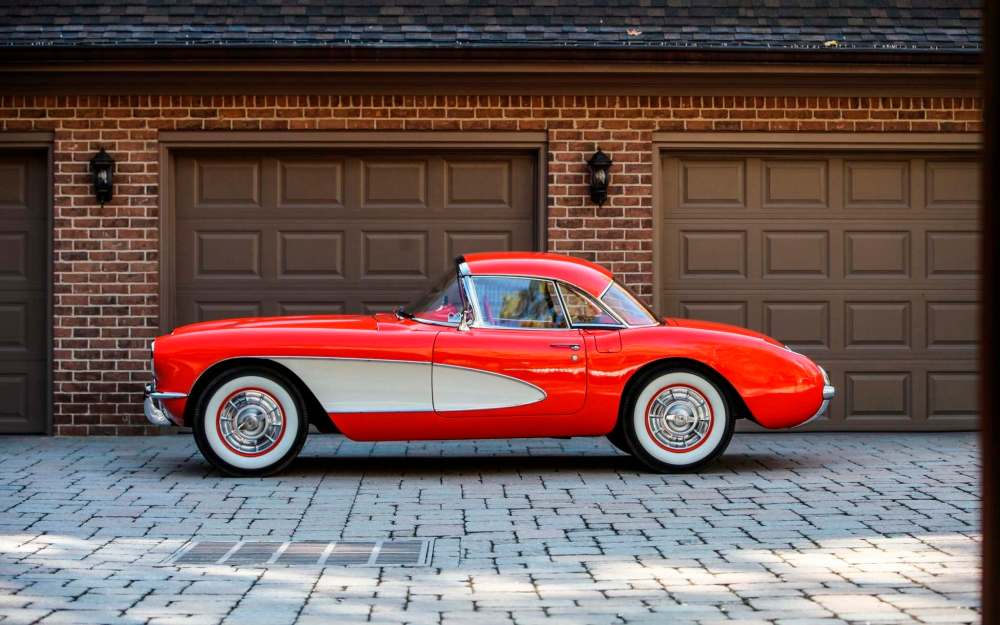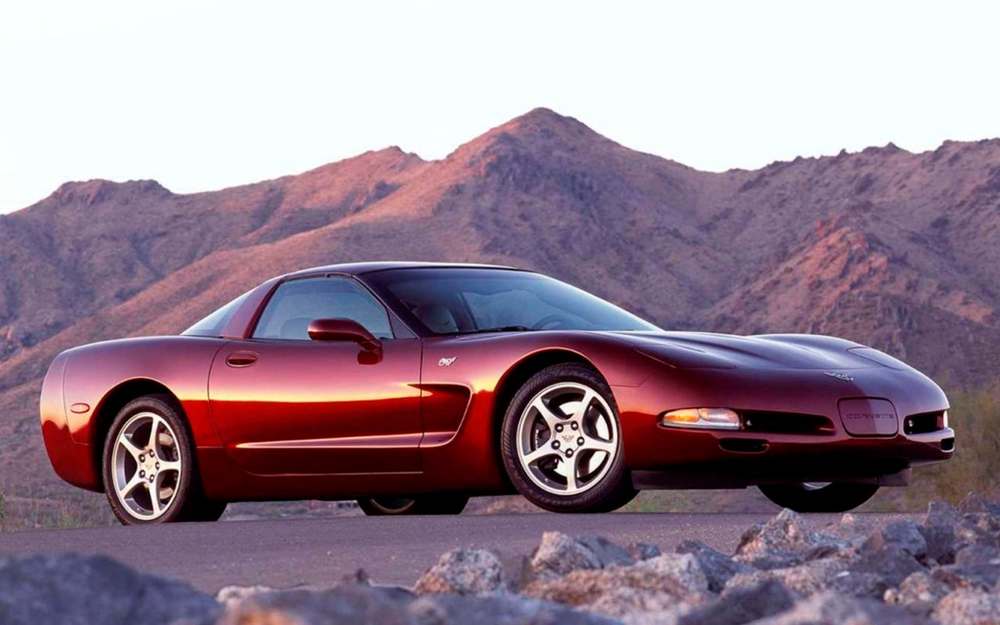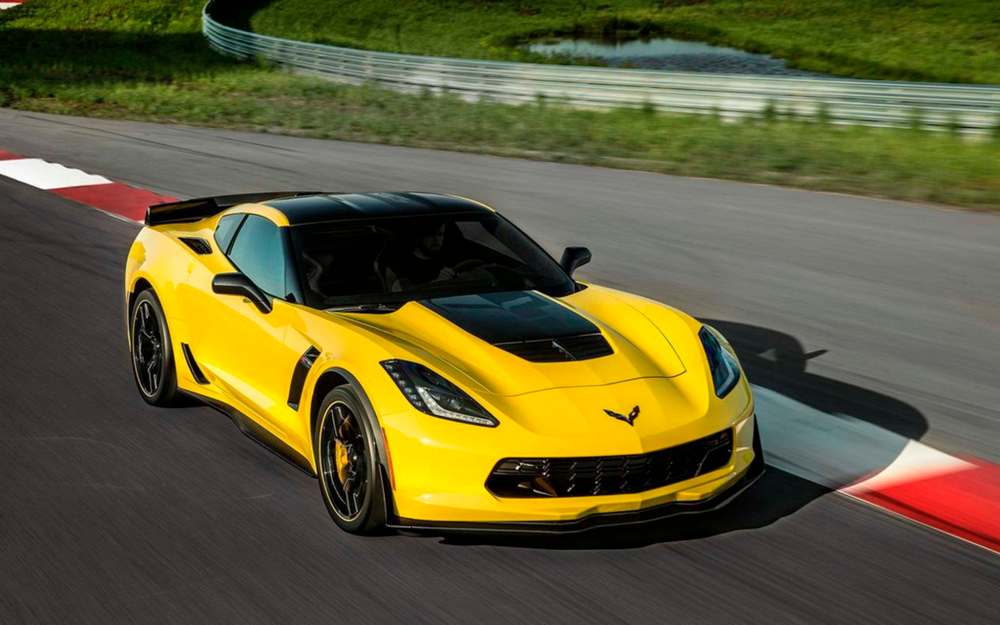Evolution of the Chevrolet Corvette
Famous sports car has had many face lifts over the years
Advertisement
Read this article for free:
or
Already have an account? Log in here »
To continue reading, please subscribe:
Monthly Digital Subscription
$0 for the first 4 weeks*
- Enjoy unlimited reading on winnipegfreepress.com
- Read the E-Edition, our digital replica newspaper
- Access News Break, our award-winning app
- Play interactive puzzles
*No charge for 4 weeks then price increases to the regular rate of $19.95 plus GST every four weeks. Offer available to new and qualified returning subscribers only. Cancel any time.
Monthly Digital Subscription
$4.99/week*
- Enjoy unlimited reading on winnipegfreepress.com
- Read the E-Edition, our digital replica newspaper
- Access News Break, our award-winning app
- Play interactive puzzles
*Billed as $19.95 plus GST every four weeks. Cancel any time.
To continue reading, please subscribe:
Add Free Press access to your Brandon Sun subscription for only an additional
$1 for the first 4 weeks*
*Your next subscription payment will increase by $1.00 and you will be charged $16.99 plus GST for four weeks. After four weeks, your payment will increase to $23.99 plus GST every four weeks.
Read unlimited articles for free today:
or
Already have an account? Log in here »
Hey there, time traveller!
This article was published 26/07/2019 (2361 days ago), so information in it may no longer be current.
Every self-respecting car buff on the planet has been buzzing for the last week about the all-new 2020 C8 Corvette. The biggest news is the engine is now behind the driver for the first time in Corvette production history.
Some purists are cringing about the layout of the engine, but if the fervour exhibited on social media is any indication, it would appear this new Corvette is a bona fide hit.
Some love it and some hate it, which is a clear sign of a solid design.
The wise folks in the Chevrolet marketing department haven’t spilled all the beans yet, so there are still plenty of unanswered questions regarding special editions, engine options and final pricing, but one thing is certain: Corvette is just as relevant today as it was when initially released, way back in 1953.
Without looking under the hood at the many engine changes, (we’d need an entire section), here’s a quick Corvette history — call it a Vetucation, if you will.

First generation — C1 (1953-1962)
Three hundred hand-built Polo White Corvette convertibles were produced for the 1953 model year. The cars were in huge demand and typically only made available to GM executives and movie stars. These early ’Vettes are often referred to as “solid-axle” models because the independent suspension setup didn’t debut until the 1963 Sting Ray model. Although the chassis remained, many changes occurred throughout the first generation, including a fresh body in 1956 with a new grille and side coves. The rear fins were also removed. Yep, you read it right — the first Corvette had tail fins.

Second generation — C2 (1963-67)
The second-generation Corvette was smaller than the first generation, but abundantly more powerful and arguably the most sought-after. The Sting Ray name first appeared in 1963, also the first year of the Corvette coupe. The ’63 coupe featured the polarizing and extremely popular split rear window. The new Sting Ray featured hidden headlights, functional hood vents and an independent rear suspension. Four-wheel disc brakes were introduced in 1965, and so was the ferocious addition of a big-block engine. You’ll know one of these cars if you spot it on the street. It will make your knees weak.

Third generation — C3 (1968-82)
The third-generation Corvette was patterned after the Mako Shark II concept car. The C3 coupes were also the first cars to use T-top removable roof panels. Sting Ray emblems weren’t used on the 1968 model, but Chevy sales literature still referred to the Corvette as a Sting Ray. The name returned from 1969 through to 1976, but like the most recent use of the name with the current C7 Corvette, the name was changed to just one word, Stingray.
Styling didn’t change much throughout the car’s lifespan. Due to government regulations, one big change took place in 1973, when the Corvette’s chrome front bumper was changed to an impact-resistant urethane bumper cover.
The big power that had dominated the late ’60s was a thing of the past by the end of this car’s production, and due to emission-control requirements, the once-potent Corvette was a shadow of its former self.

Fourth generation — C4 (1984-96)
The fourth-generation Corvette was the first totally redesigned ’Vette since 1963.
The car was actually supposed to be a 1983 model, but quality issues and parts delays meant only 43 prototypes for the 1983 model year were built. All but one of the 1983 prototypes were destroyed.
Because of the radical changes, many Corvette fans hated the C4 design, and even today, these cars are widely considered the least desirable Corvettes.
It’s a shame these cars don’t get more respect, but if you shop carefully, one can be had for a song. Later models, such as the 1992 ZR1, have made a resurgence in the collector-car market.

Fifth generation — C5 (1997-2004)
With Japanese hotrods flooding the market, the C5 Corvette had to be tightened up in all areas, including handling, comfort and power. With a top speed of 291 km/h, increased structural rigidity and a beautiful design, that goal was achieved — and then some. The C5 is responsible for creating a whole new generation of Corvette fans.

Sixth generation — C6 (2005-13)
The C6 Corvette was a bold new design with a fresh-looking body and exposed headlamps for the first time since 1962.
The passenger compartment was larger and more comfortable, and a new 6.0-litre engine and reworked suspension geometry were incorporated. The C6 was built at the Bowling Green, Ky., assembly plant, where all Corvettes are made.
In 2007, the ZR1, a high-performance variant of the Z06, was released with a supercharged 6.2-L LS9 V-8 that produced 638 horsepower.
A test of the ZR1 on the German Autobahn revealed a top speed of 309 km/h. A polycarbonate window is placed in the centre of the hood, allowing the engine to be seen from the exterior.

Seventh generation — C7 (2014-19)
Introduced for the 2014 model year, the C7 was the first ’Vette to bear the Stingray name since the 1968 third-generation model. The C7 was designed not only to provide a bold styling statement, but also to incorporate an interior makeover that would silence past complaints about the quality of interior fit and finish.
Lightweight and loaded with technology, C7 features include a carbon-fibre hood and removable roof panel. Its fenders, doors and rear quarter panels remain fibreglass composite. The C7 also uses Aerogel, a material developed by NASA, to keep heat from the transmission tunnel from transferring into the cabin. The chassis is made of hydro-formed aluminum.
With the recent reveal of the 2020 C8 Corvette, 2019 is the final model year for the seventh-generation Corvette. Chevrolet auctioned off the final C7 Corvette, a black Z06 coupe, at a Barrett-Jackson charity auction held in Connecticut on June 28, for US$2.7 million.
willy@freepress.mb.ca

